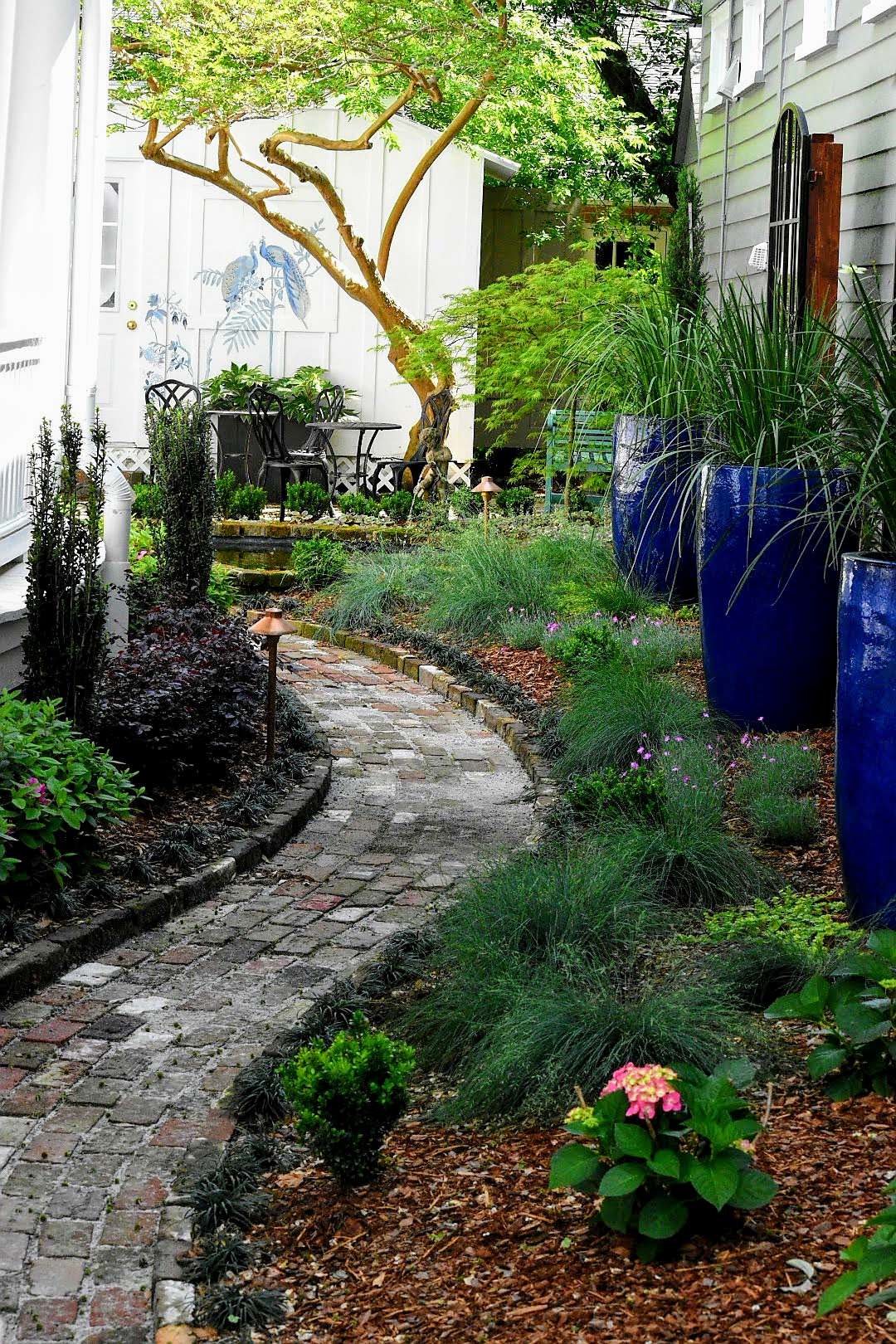Leading Landscape Designer for Stunning Garden and Backyard Designs
Wiki Article
The Function of Garden Style in Promoting Sustainability and Biodiversity
Yard design is progressively identified for its possible to promote sustainability and enhance biodiversity within metropolitan and rural landscapes. By focusing on native plant varieties and utilizing water conservation strategies, designers can create settings that not only prosper yet also call for very little chemical treatment.Relevance of Native Plants
Stressing using native plants in yard design is critical for promoting ecological balance and sustainability. Indigenous plants are those that normally take place in a certain area and have adapted to the neighborhood climate, dirt, and wild animals. Their consolidation into yards supports regional ecological communities by providing environments and food resources for indigenous pollinators, birds, and other wild animals.Furthermore, indigenous plants are normally a lot more immune to regional insects and conditions, minimizing the demand for chemical pesticides and fertilizers. This resistance not only reduces environmental influence however likewise reduces upkeep costs for gardeners. Additionally, native plants usually require less water than non-native species, aligning with sustainable horticulture techniques and decreasing the strain on regional water sources.
Water Preservation Methods
Incorporating native plants not only boosts biodiversity but likewise plays a substantial function in water conservation within yard designs. Indigenous varieties are adjusted to regional environment problems, calling for less water than non-native counterparts. Landscape Designer. This particular reduces the demand for watering, preserving both water sources and energyAdditionally, carrying out rainfall yards can capture and filter stormwater overflow, advertising groundwater recharge while decreasing disintegration. These gardens make use of native plants that grow in wet problems, effectively managing excess water while developing varied environments.

An additional reliable method is using permeable paving products in pathways and patios, allowing rain to infiltrate the ground instead of running. This promotes moisture retention and lowers the need for watering.
Finally, setting up a rain harvesting system can considerably add to water preservation initiatives. Accumulating and keeping rain for garden use motivates lasting methods and lowers reliance on local water resources (landscape design near Johns Island South Carolina). By integrating these methods, garden styles can properly promote water preservation while supporting ecological health and wellness
Lowering Chemical Usage
While many garden enthusiasts look for dynamic and healthy and balanced plants, reducing chemical usage is vital for promoting a sustainable ecosystem. The reliance on artificial fertilizers and chemicals can lead to dirt degradation, water contamination, and a decline in beneficial insect populaces. By embracing organic horticulture practices, garden enthusiasts can enhance the health and wellness of their landscapes while advertising biodiversity.One effective approach is to make use of garden compost and natural changes, which improve the soil naturally and improve its structure. landscape design near Moncks Corner South Carolina. These methods not just enhance plant wellness but also decrease the requirement for chemical plant foods - Landscape Designer. Implementing integrated parasite monitoring (IPM) strategies better reduces chemical inputs by motivating all-natural killers, such as ladybugs and parasitic wasps, to control pest populaces
Additionally, picking indigenous plant varieties can considerably minimize the need for chemical treatments, as these plants are much better adapted to local problems and are more resilient versus parasites and illness. By prioritizing lasting techniques, gardeners can produce prospering environments that sustain both plant health and wellness and community stability, eventually causing yards that are not just stunning however also ecologically liable. Decreasing chemical usage is an essential action in cultivating yards that recognize and improve the environment.
Producing Wildlife Environments
Creating dynamic wild animals environments within yards not just boosts biodiversity yet likewise matches lasting gardening methods intended at minimizing chemical use. By integrating indigenous plants, gardeners can offer vital resources such as food and sanctuary for numerous species, including birds, pests, and tiny mammals. Native plants are well-adapted to local problems, needing less water and fewer chemical inputs, therefore straightening with sustainability objectives.
Maintaining a naturalistic technique, which might consist of leaving some locations wild or undisturbed, permits the all-natural procedures of environments to prosper. This method urges the presence of beneficial insects and pollinators, which play an essential role in the health of both yards and bordering atmospheres. Overall, developing wild animals habitats is an essential element of lasting garden layout, fostering ecological balance and strength while improving the appeal and functionality of exterior spaces.
Area Interaction in Horticulture
Neighborhood involvement in horticulture cultivates a feeling of belonging and collective obligation, transforming specific gardening efforts right into shared initiatives that profit the whole neighborhood. By involving area members in horticulture jobs, we can cultivate not only plants but additionally partnerships and social networks. Neighborhood yards work as vital areas for education and learning, where individuals of any ages can learn more about sustainable techniques, biodiversity, and environmental stewardship.Collaborative gardening initiatives, such as community yards, promote the exchange of expertise and resources, making certain that all participants can add and benefit. This inclusivity improves community durability, as participants collaborate to get over difficulties such as food instability and environmental deterioration. Furthermore, area yards can act as platforms for cultural expression, permitting people to share their heritage with diverse growing and gardening methods.
In addition, engaging the area in horticulture initiatives can cause raised awareness of local ecosystems and the value of biodiversity. By working jointly to design and maintain these rooms, homeowners cultivate a shared commitment to sustainability, developing a lasting effect on both the environment and community cohesion. Eventually, community interaction in horticulture is an effective device for advertising ecological stewardship and enhancing the top quality of life within communities.
Conclusion
By stressing the usage of indigenous plants, executing water conservation strategies, and minimizing chemical inputs, gardens can properly support regional ecosystems. Collectively, these practices not just enrich the charm of spaces however additionally have a peek at this website promote ecological balance, making yard style a vital component in the quest of a lasting future.Report this wiki page